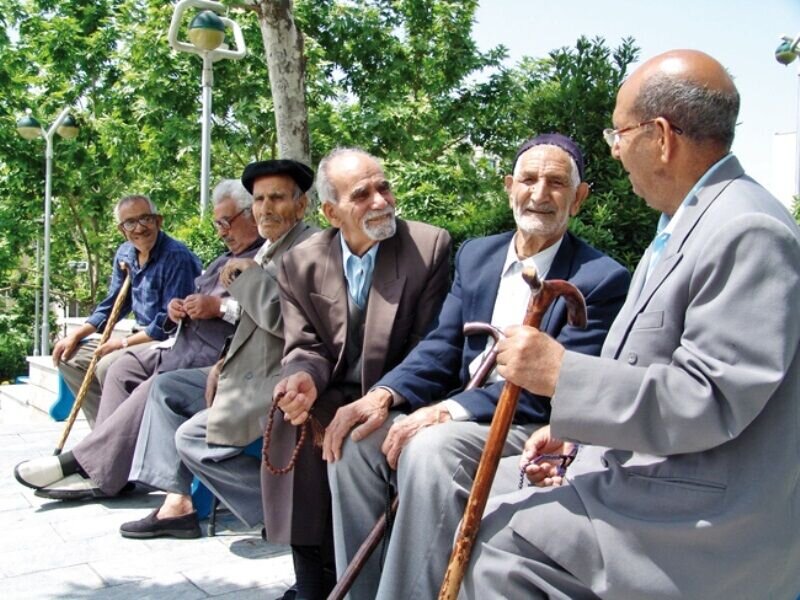Elderly population in Iran snowballing

TEHRAN – The elderly population in Iran is increasing rapidly as there were 7.46 million senior citizens in the [Iranian calendar] year 1395 (March 2015-March 2016), which has now reached 8.4 million.
Seyed Hamed Barakati, director of the population and family health office of the Ministry of Health, said that from 1976 until today, Iran was a very young population with an average age of 22 years, while it has reached an average population of 32 years, which means that the country got 10 years older.
The country's population growth is less than 1.7 percent, while the growth of the elderly is 3 percent. The United Nations forecast for 2050 shows that four regions of North America, Western Europe, Southeast Asia (Iran), and Oceania (New Zealand) will have older people over 30 percent, which is different from Western countries in this area.
In a period of 5 years, about 16 percent has been added to the country's elderly.
The country's population growth is less than 1.7 percent, while the growth of the elderly is 3 percent.
The aging population is 4 times the growth of the population. If the situation continues like this, we will reach a point where the proportion of the productive population, i.e. between 15 and 65 years old, will be very low.
The decline in the marriage rate, followed by a dramatic decrease in childbearing, has sounded the alarm of the aging population, an issue that has forced government officials to enact legislation to support the population growth and the youth.
By a decree issued by President Ebrahim Raisi, the "Law on Family and Youth Support" approved by the Majlis (Iranian Parliament) was notified to the Ministry of Health and the Vice Presidency for Women and Family Affairs.
The Guardian Council approved the law on November 17 to implement a population growth and family support plan for 7 years to change the declining trend of childbearing.
The plan stipulates health insurance for infertile couples, providing services and facilities to working women, providing health and nutrition support packages to mothers and children, educational opportunities for student mothers, providing livelihood support to families, and ongoing medical services to pregnant women.
Aging population to triple
Over the last 5 decades, the elderly’s population has increased from about 5 to 10 percent, and it is predicted that this rate will triple in the next 50 years so that it is vital to take the aging phenomenon seriously.
Iran is one of the countries with the highest pace of aging in the world.
Mohammad Esmaeil Akbari, a senior advisor to the minister of health, has said that the world has grown about 5 years older over the past 70 years, but the population of Iran has unfortunately grown 10 years older in the past 60 years.
"Currently, the elderly constitute less than 10 percent of the population and we are considered a young country, but we are getting older every year so that in the next 20 years, we will be one of the oldest countries in the world and the oldest by the next 30 years,” he explained.
In demography, the population under the age of 15 is called “young”. In 1977, 46 percent of the people were young, while now 23 percent of the population are below 15 years of age.
Iran has achieved a demographic window of opportunity which in all other countries led to economic prosperity so that Iran must seize the opportunity now before its working-age population starts to shrink and get older in the 2050s.
Awareness of population age changes and political-economic planning based on it can be very important in the success of programs and policies. Comprehensive policy-making and planning should be tailored to the overall characteristics of this age group, he explained.
FB/MG

Leave a Comment